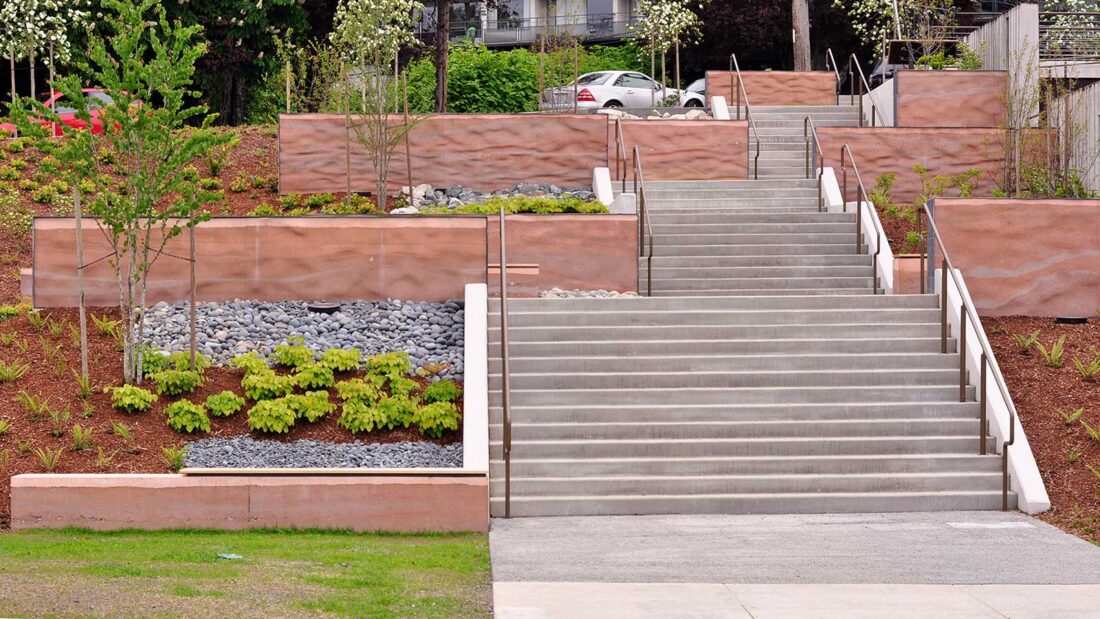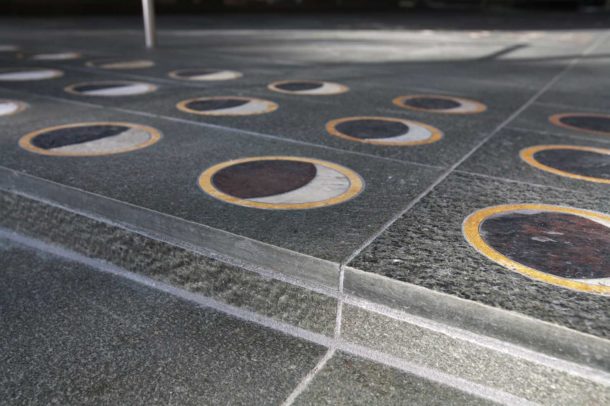Fluvial Migration: Mountain to Sea
Robert Horner
Murray CSO
Rock gardens and rammed earth walls mimic the geological path of water to Puget Sound.

Before King County built the Murray CSO Control Facility in West Seattle, untreated stormwater and wastewater discharged into Puget Sound off Lowman Beach Park during heavy rains. Today a 1 million-gallon underground storage tank is nestled into the site’s steep slope where it diverts runoff until it can be treated. Above the tank, Robert Horner’s Fluvial Migration: Mountain to Sea terraces the hillside with a series of rammed earth retaining walls and rock gardens with stunning views of Puget Sound and the Olympic Mountains.
Flanking a public staircase that connects a view platform at the top of the slope with the beach at the bottom, Horner’s rammed earth walls divide the site into ecological chapters, which take the form of rock gardens. Each garden is made from stone types found between the Cascade Range and the Puget Sound, including mountain granite, basalt, river stone, granite dry stack, and coastal pebble. A journey down the staircase echoes the water’s path through the unique geologic zones that link mountain to shoreline.Continue Reading ›
An ancient construction technique that dates back the Neolithic age, rammed earth is used today as a sustainable building practice, laying and compressing colored aggregates, sand, and fly ash in small batches. Horner made custom form liners for the walls, designing vertical slits to frame stone inlays that complement the rock gardens. Small paving elements similarly reflect the various stones in the work.
Based in Port Townsend, WA, Horner is and architect, biologist, archaeologist, and public artist. His work focuses on revealing and accentuating the specific environmental and historic characteristics of place. Other public artworks include the Tidal Resonance Chamber in Tacoma and Lunar Rhythmic Revolution at Harborview Medical Center in Seattle.
